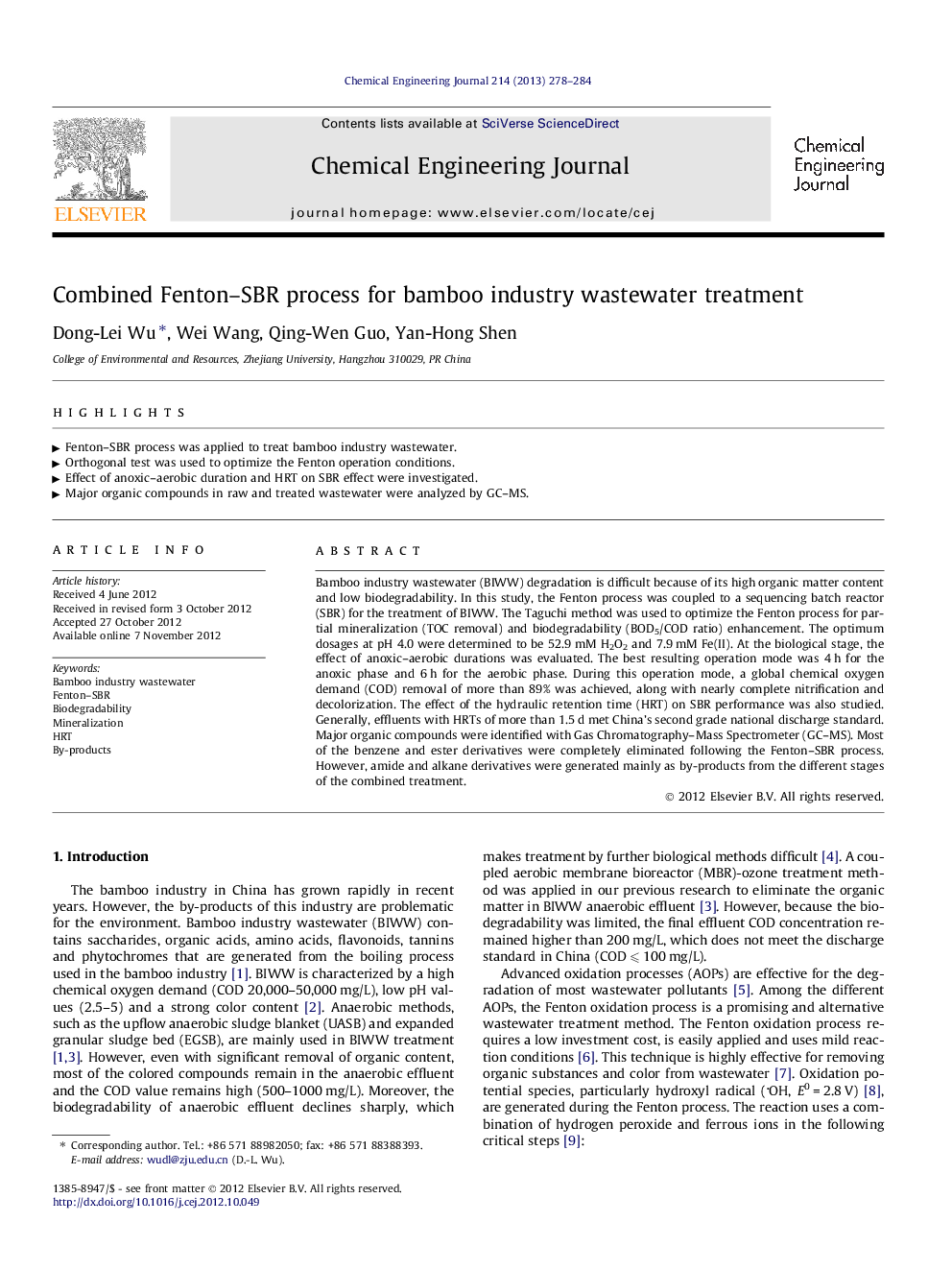| Article ID | Journal | Published Year | Pages | File Type |
|---|---|---|---|---|
| 149051 | Chemical Engineering Journal | 2013 | 7 Pages |
Bamboo industry wastewater (BIWW) degradation is difficult because of its high organic matter content and low biodegradability. In this study, the Fenton process was coupled to a sequencing batch reactor (SBR) for the treatment of BIWW. The Taguchi method was used to optimize the Fenton process for partial mineralization (TOC removal) and biodegradability (BOD5/COD ratio) enhancement. The optimum dosages at pH 4.0 were determined to be 52.9 mM H2O2 and 7.9 mM Fe(II). At the biological stage, the effect of anoxic–aerobic durations was evaluated. The best resulting operation mode was 4 h for the anoxic phase and 6 h for the aerobic phase. During this operation mode, a global chemical oxygen demand (COD) removal of more than 89% was achieved, along with nearly complete nitrification and decolorization. The effect of the hydraulic retention time (HRT) on SBR performance was also studied. Generally, effluents with HRTs of more than 1.5 d met China’s second grade national discharge standard. Major organic compounds were identified with Gas Chromatography–Mass Spectrometer (GC–MS). Most of the benzene and ester derivatives were completely eliminated following the Fenton–SBR process. However, amide and alkane derivatives were generated mainly as by-products from the different stages of the combined treatment.
► Fenton–SBR process was applied to treat bamboo industry wastewater. ► Orthogonal test was used to optimize the Fenton operation conditions. ► Effect of anoxic–aerobic duration and HRT on SBR effect were investigated. ► Major organic compounds in raw and treated wastewater were analyzed by GC–MS.
